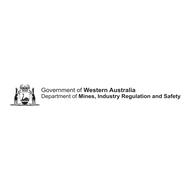EIS study shows multiplier effect of $10.3 million for every $1 million invested.
| Date: | Friday, 17 April 2015 |
|---|
New pre-competitive geoscience identified as the main driver of exploration investment.
Every $1 million invested in the State Government’s Exploration Incentive Scheme (EIS) stimulates exploration activity which generates $10.3 million in benefits for Western Australia.
This is the key finding of a comprehensive economic impact study into the EIS conducted by ACIL Allen Consulting for the Department of Mines and Petroleum.
Geological Survey of Western Australia (GSWA) Executive Director Dr Rick Rogerson said the review confirmed the scheme’s strong multiplier effect on the State’s economy.
Dr Rogerson pointed out that the multiplier factor of roughly one to 10 was actually a conservative estimate based only on the direct effects of increased exploration activity and associated employment stimulated by the scheme.
“Modelling that assesses the economic impact of discovery and commercialisation of new mines as a result of increased exploration predicts considerably higher returns,” Dr Rogerson said.
“Under this scenario, the modelling results in a further $13.4 million of benefits for every $1 million invested, bringing the total impact figure to $23.7 million.
Dr Rogerson said that new pre-competitive geoscience had been highlighted by the review as the main driver of exploration investment by the private sector.
“The scheme’s flagship is the Co-funded Drilling Program that refunds up to 50 per cent of costs in drilling in greenfields areas,” he said.
“However, we now know that data releases from the Geological Survey rival the drilling program in importance and that each new release stimulates exploration activity.”
Dr Rogerson said that a $33 million EIS commitment made in 2009 to geophysical and geochemical surveys had resulted in nearly the whole State now being covered by airborne magnetic and radiometric survey data.
New data had led to innovative mineral system studies in a number of areas, he said, including most recently the Gascoyne Province, the Edmund Basin in the Capricorn Orogen, the Speewah Basin in the east Kimberley, and the Yilgarn Craton.
The State Government has renewed its commitment to the EIS by approving annual funding of $10 million over three financial years from July 2014 until June 2017.
This brings total funding for the scheme to about $130 million dollars.
The Co-funded Drilling Program has offered about $54 million dollars to more than 50 projects, of which about $21 million has already been refunded to more than 265 projects.
FACT FILE
The EIS has spawned many significant discoveries in the past five years, including:
- Nova-Bollinger nickel project in the Fraser Range east of Norseman
- Tropicana East Gold project 330 km north-east of Kalgoorlie
- Handpump gold discovery in the West Musgrave region
- Webb diamond project in the Gibson Desert
- Oxley potash project near Three Springs in the Mid West
- Camelwood nickel project at Fisher East, 150 km north-east of Leinster
- Yeneena copper project in the Paterson Province
- MacIntosh graphite project in the East Kimberley
- Dusk Til Dawn gold discovery in the NE Yilgarn
- Millennium zinc project in the Paterson Province

